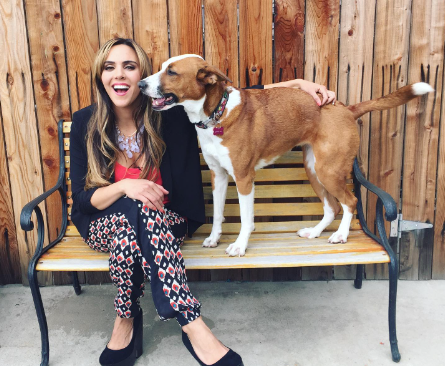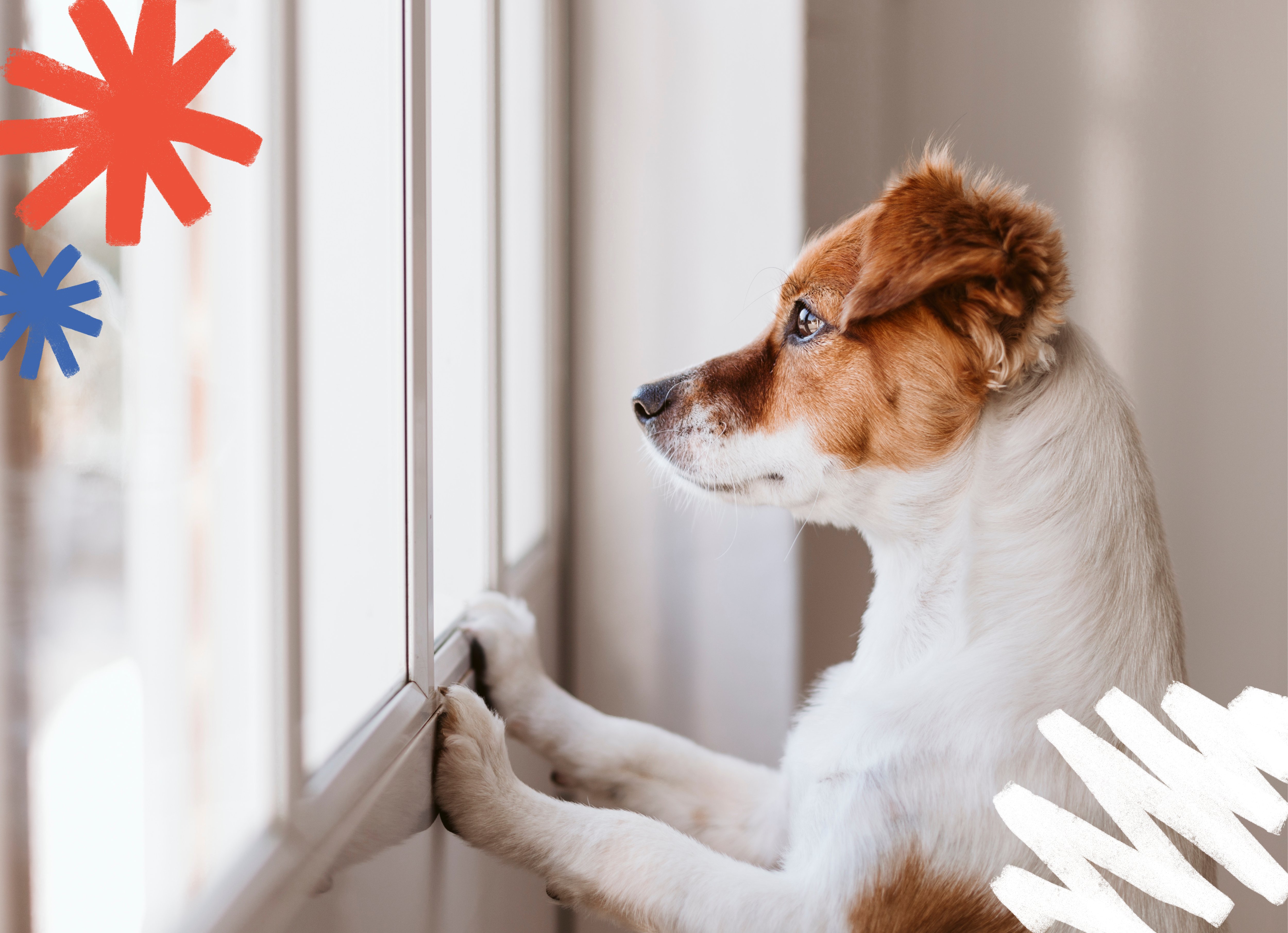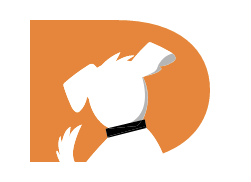8 min read
Tips for Going Back to Work…with or without your canine best friend!
 Laura Nativo
:
Jul 27, 2021 8:38:53 AM
Laura Nativo
:
Jul 27, 2021 8:38:53 AM

Dogs across America are more bonded to their humans than ever. Delilah, Penelope & I are usually pretty inseparable… and I know they’ve come to love (interrupting!) Zoom meetings, and the peaceful time we’ve shared working from home.
While I am grateful for a career that includes bringing my dogs just about everywhere, many people are facing the bittersweet reality of going back to their 9-to-5 office! For the lucky ones, a growing dog-friendly workplace movement will offer the benefit of bringing your pup to work with you. But survey after survey says most people are struggling with having to leave their dogs at home as they return to work.
So how do we prepare to support our dogs?
For dogs being left behind- it’s understandable that both ends of the leash are bound to suffer from separation-related distress.
For dogs coming with us - we have to remember that sitting at a computer all day may require a bit of patience!
Whatever your work situation, I am here to help :)
At DOGTV, we like to be transparent: we have affiliate relationships with other companies. We may receive a commission on qualifying purchases made via the links in this article at no extra cost to you.
IS YOUR DOG COMING WITH YOU TO THE OFFICE?
To give you peace of mind for transitioning back to the workplace with your best fur friend in tow, here are my tips for having a successful day at work with your cute coworker:
Bring what you need to set your dog up for success.
There are several items you should bring with you so your dog will be safe, and happy, and let you get your work done without interruption:
- A bed or training mat for your dog to lie on. This not only makes your dog more comfortable, but it also helps keep pet hair off the floors. One of my favorite portable mats is the Cozy Matt by Jax n Bones. You can give your dog treats and chews while on their magic mat, so they can learn it’s the best place to be!
- Lots of high value training treats to reward good behaviors and choices. Any time your dog sits for petting, or looks to you for attention, lies quietly on their place, walks nicely with you, ignores another dog barking, goes potty outside, lies down to relax —you should be rewarding those and so much more! By doing this, you’re helping them learn how to be a great coworker with manners.
Don’t be stingy—the more generous you are, the more successful you’ll be together. It’s also good to have a variety. You can bring some of their food meal, in addition to a variety of dog treats and even healthy “people” food, to reward for the best behaviors. You can also use your higher-value food rewards to help your dog through anything that can be more challenging. Remember to pay your dog generously, since they are working just as hard as you are to be good at their office sidekick job! - Your dog’s favorite chew & enrichment toys. These are key for helping your dog enjoy mental stimulation and relax on their own. Chewing and licking can help dogs settle, so plenty of natural chews (such as bully sticks or marrow bones) and stuffed Toppl Toys, lick mats, and snuffle mats can be really worthwhile ways to keep your dog happy and out of trouble and help you focus on your work. Likewise, puzzle toys can be a great way to engage them, and a wonderful prelude to a map due to their hard work to get that food out of the toy!
- A water bowl and plenty of fresh water. Staying hydrated is important, especially when you’re giving your dog wonderful treats for doing well. If your workplace doesn’t have a sink or filtered water, make sure you bring plenty for your dog. I always prefer my dogs not to share community water bowls, in case a dog from outside your home is sick!
- Plenty of clean-up supplies: poop bags as well as towels and a spray like Skout’s Honor, just in case of accidents! While you may do your best to get your dog outside often for breaks, it’s important to have an enzymatic cleaner in case of an accident. Lint rollers and a portable vacuum are also handy if your dog sheds, to keep your office attire looking fresh (and not excessively furry!)
- An exercise pen, crate, or tether may also be helpful. With an exercise pen, you can “gate off” your work area so your dog can’t leave. Likewise, having a leash that you can easily tether to your desk or workspace can help contain your dog. A crate can also be another way to manage as needed and can be comforting to your dog, as well as help them have a break from interacting with others. Consider what will work best for you and your dog, and the work environment.
- Bonus Tip! An old smartphone or tablet. If you have a DOGTV subscription, connect an old device to the DOGTV app where you can set up the relaxation playlist next to your dog’s “cubicle”!
Brush up on those manners.
While many people love and accept dogs, some of your coworkers may not be as happy to greet your dog as they would them. Have good control of your leash, with your dog on a properly fitted harness to ensure they are safe and not putting pressure on their throat if they happen to be a little bit excited and want to run up to anyone. Plenty of delicious treats can help you redirect your dog to stay beside you, and you can prepare in advance by practicing sitting politely for petting your dog.
Ask your dog to sit, and then click and treat. Repeat often. If they get up, stop and cue again. Once they are good with doing this with you, you can then put them on a harness and leash and practice with trusted family and friends, having them do the same. Once you come to work, make sure you ask your coworkers to only pet while the dog sits, lays, or stands calmly. If someone doesn’t want to interact, use your voice and treats to help your dog move away with you, and reward generously.
Consider any potential safety hazards or off-limits areas.
Make sure any cords your dog may want to chew on are wrapped and placed out of the way. Some plants are dangerous to dogs, so be sure to keep them out of their way as well. Likewise, cleaners or other hazards like heavy equipment can be dangerous.
Be aware of these and place them out of reach, or manage your dog’s access to them. Besides these dangers, some places may be off-limits to your dog, such as cafeteria or kitchen areas, or employee bathrooms as well as larger common areas. Be sure to know what is acceptable and what is not by checking with colleagues and making plans to address these concerns.
Take breaks.
Your dog is in a new and distracting environment, and there’s no doubt the excitement can make it a little more challenging for your dog to act as they do while at home. Go out more frequently than usual for potty breaks. This is a great way for you to get into practice to take mental health breaks for yourself too!
Have a helper.
Before you bring your dog in, you may want to find a coworker or two who can help in case you need it. Perhaps you weren’t anticipating a client coming by and having to meet with them, for instance. Or perhaps you just need a break and want to share your dog with someone you can trust. Whatever the case, it’s good to have a helper for anything that may come up where you could use some assistance.
Have a backup plan.
Not all dogs may enjoy going to work with you. It may be overwhelming, or they may be unable to settle. In that case, it’s good to have a backup plan. Are you able to leave and bring your dog back home? Or do you have a friend, family member, or pet sitter/dog walker you can call to take them home and get them settled? Make sure you have a plan you can rely on before you go to work with your dog!
Thank your boss!
We all know how important positive reinforcement is… if your employer is kind enough to welcome dogs, please be a good role model and graciously let them know how much you appreciate their pet-friendly policy! Hopefully, in the future, more companies will follow suit if dogs prove deserving of the privilege.
What to do if your office is NOT dog friendly.
For those of you who cannot take your pup to the workplace (and may be searching for a new job after reading this article!) you can still get DOGTV so that your dogs have something stimulating to watch while you’re gone. If you are unable to take your dog with you to the office, here are my tips for helping with this transition:
Plan ahead and practice.
Before you have to go to a full day’s work and be gone for several days to a week, start doing more “home alone” practice. Go out for an afternoon to start, for instance.
If you can set up a video camera or other monitoring system, this can help you ensure your dog isn’t experiencing any stress while you go. It can also help you better determine your need to manage the space (for instance, if your dog loves to go into the kitchen area to countersurf, maybe put away those items on your counters, or use gates or exercise pens to prevent their entrance into the kitchen).
From an afternoon here and there to a longer period leading up to your new routine of going back to the office, this will help ease your dog gradually rather than an extreme change all at once. It can also help you know whether or not you need to address any type of separation anxiety or isolation distress adequately before you must return to the office. If you are struggling for help with these issues, I recommend getting the help of a veterinary behaviorist or a Certified Separation Anxiety Trainer.
Give your dog quality interaction before and after work.
No doubt, full-time workloads are exhausting. Depending on your energy level and lifestyle, and what timing you have available, think about all the ways you can help tire your dog out in a quality way before you leave, as well as give outlets when you return.
If you love to bike and your dog loves to run, get up a little earlier for a 10-minute spin around the block. Or do some training games in the backyard - fetch is a great game for strengthening "come" when called, as well as a good outlet for physical exercise for your pooch.
Nose work games can be a ton of fun and help dogs harness their natural amazing sense of smell. Having a way to “hide” their food for breakfast and/or dinner can be a great alternative, especially if you are low on energy! Walks are always a great alternative.
You can do a mixture of practicing heel work while giving your dog releases to go sniff in between the training, which is a perfect way to enrich them both physically and mentally. Flirt pole work can also be a great alternative to helping your dog have a great time, and you can practice having them wait for a release to go chase the pole as well as release the toy once they catch it, for added training benefits.
Provide enrichment for when you’re gone.
There are so many types of food-dispensing toys you can use when you aren’t around. Kongs are a go-to favorite as you can stuff them in so many different ways. I love snuffle mats, Lickimats, Buster Cubes, West Paw Design Toppl Toys, and the IQ Treat Balls. All of these can hold treats and food your dog either has to toss around to get out, or lick and chew out. Just be aware of ensuring your dog will not hurt himself by always supervising the first couple of uses before leaving him alone with them.
Your dog can enjoy all these delights while watching DOGTV, and you can also use a Furbo or Petcube to dial in and see what your dog is doing, in addition to dispensing treats with it as you do! There are so many great possibilities out there to explore when it comes to keeping your dog happy when you aren’t at home.
Enlist help if needed.
Sometimes a quality dog daycare, pet sitter, or dog walker can be a great helper. Some trainers also do day training programs where they come to your home and work with your dog on their skills. Be very careful to do your research about the methods they use, and that they are properly licensed and insured.
There are a lot of different kinds of services out there now, including people who will jog/run with your dog, or take them hiking. These can all be great alternatives to mix things up and get your dog more activity when you’re having to work longer hours too.
I hope these tips can help all of you better plan for life back at work, with or without your dog. What do you think? As much as my girls have enjoyed working from home in our pajamas, we are thrilled to get back to our fun creative projects, like filming with DOGTV And pet industry trade shows.
Love doggedly,
Laura Nativo & the Nativo family dogs :)
